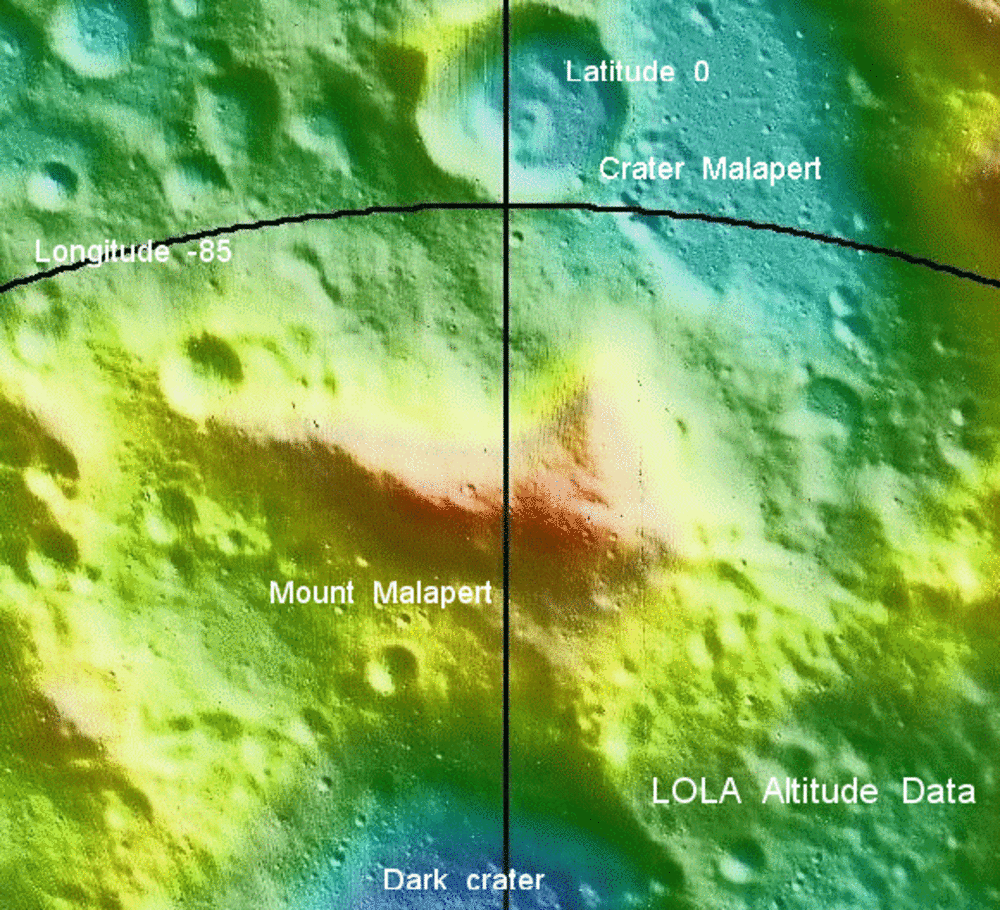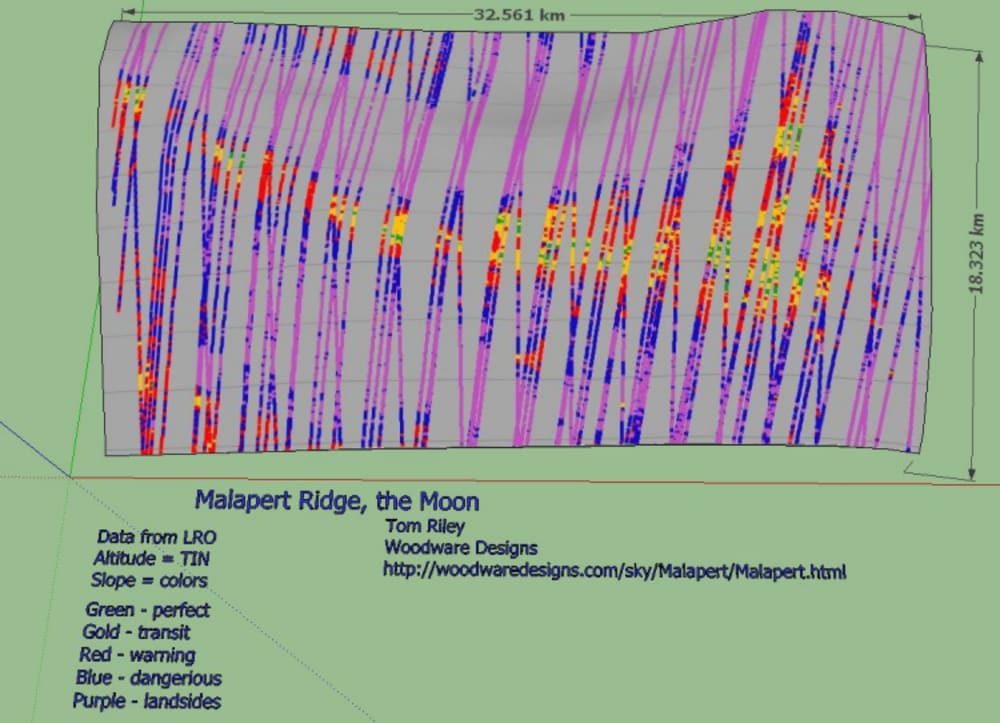The first challenge in transportation is to explore new trails, to go where no one has gone before, to leave the first footprints in undisturbed sands. At this watershed moment, the Earth's Moon waits, a vista of magnificent desolation, silent, forbidding, calling. Come, blaze new trails with me.
Recently, half a billion dollar's worth of new lunar data generated by the American instrument LOLA has become available to the public: streams of numbers about altitudes, slopes, roughness of the terrain, and the land's appearance in the brutal glare of the sun's unfiltered light. You can be among the first to turn this data into three-dimensional terrain maps that show where we can go, where we can build, where we can mine, where we can live.
You could wait for the official software (called ILIADS) to come out; it is due later this year. It will make this process easy; anyone will be able to do something with it then. However, that something will be limited to what others thought interesting, a collection of prepackaged capabilities.
Or, you can grab the raw data off the Internet now and reduce it yourself, searching out those secrets your vision demands. You can accomplish this task using only general purpose software, like spreadsheets, that you can download off the Web -- free for nothing. Join me at:
"You can Explore the Moon with the Latest NASA Data in 3D"
http://woodwaredesigns.com/sky/Malapert/Malapert.html
The full process is still scary long, but that is because I have detailed it down to the "... For Dummies" level. It is a challenge, but it is one I feel many American high school students are ready, willing, and able to take on. But only those whose interests lie in technology, engineering, science, and math (STEM) will have the motivation and drive to even try. Among those few are the explorers who will leave the next set of footprints, the next set of ruts from rocket scours, the next wheel tracks on surface of the Moon, where such marks last for a million years.
The surface of the Moon is covered with finely powered rock, called regolith, which provides only poor traction for wheeled vehicles, so such vehicles are limited to gentle slopes, 10 degrees for the legendary Apollo rovers. But the Moon is covered everywhere with rolling slopes that can slowly, unnoticed, get steeper and steeper. Wandering onto a 20-degree slope, you may not have the traction to back out. On a 30-degree slope, you will simply landslide to oblivion.
Our product will be 3D terrain maps showing sites suitable for building settlements, mining resources, and setting up the science stations. The best settlement sites are on mountain tops; the most valuable resource sites are in deep craters. Between these sites, we can map out trails along ridges and through crater wall breaks that our wheeled vehicles, robotic and manned, can safely traverse.
Join us; it will be amazing and fun.
Like this entry?
-
About the Entrant
- Name:Tom Riley
- Type of entry:individual
- Software used for this entry:Excel, GoogleSketchUp
- Patent status:none








